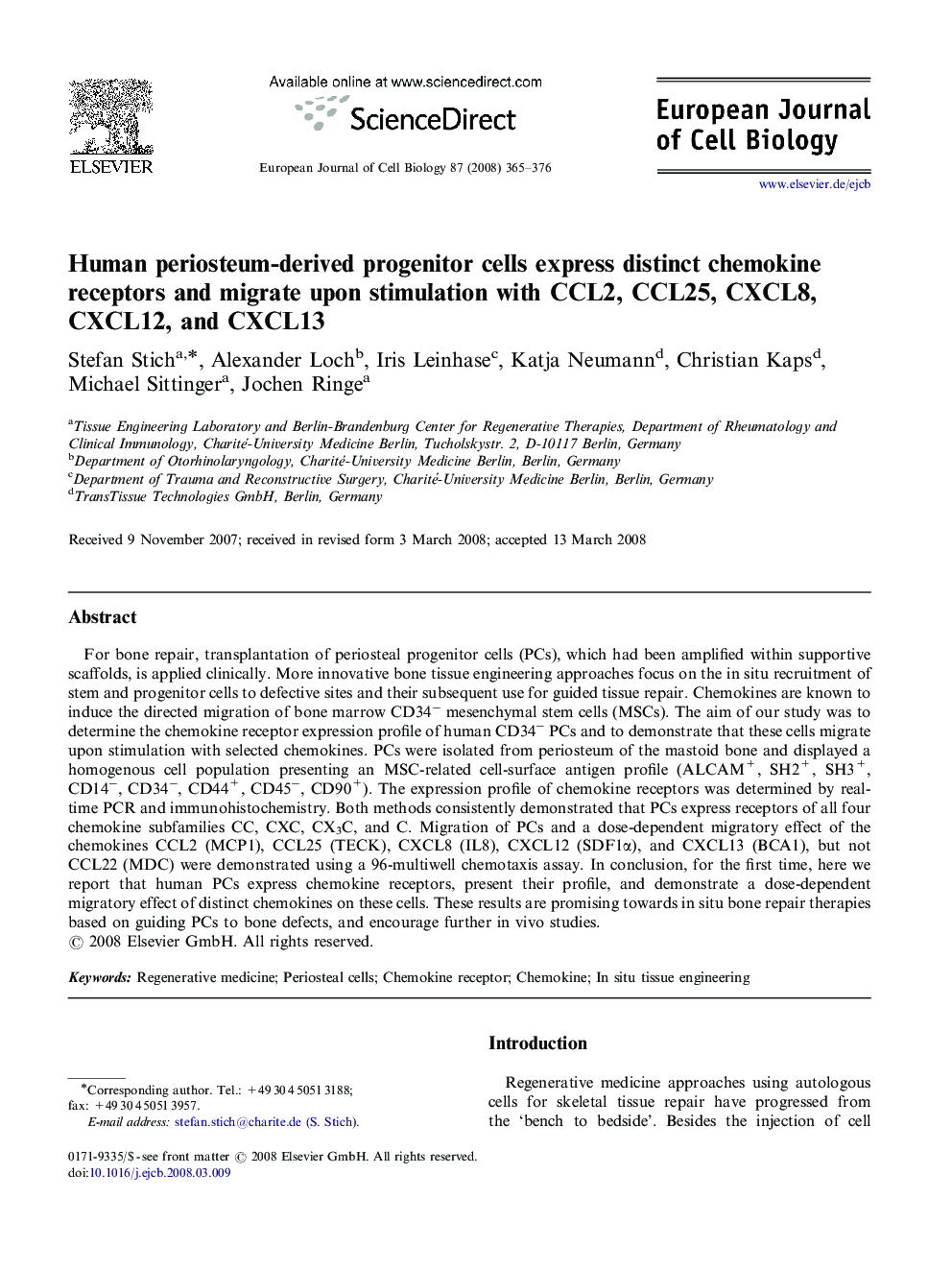| کد مقاله | کد نشریه | سال انتشار | مقاله انگلیسی | نسخه تمام متن |
|---|---|---|---|---|
| 2179181 | 1549749 | 2008 | 12 صفحه PDF | دانلود رایگان |

For bone repair, transplantation of periosteal progenitor cells (PCs), which had been amplified within supportive scaffolds, is applied clinically. More innovative bone tissue engineering approaches focus on the in situ recruitment of stem and progenitor cells to defective sites and their subsequent use for guided tissue repair. Chemokines are known to induce the directed migration of bone marrow CD34− mesenchymal stem cells (MSCs). The aim of our study was to determine the chemokine receptor expression profile of human CD34− PCs and to demonstrate that these cells migrate upon stimulation with selected chemokines. PCs were isolated from periosteum of the mastoid bone and displayed a homogenous cell population presenting an MSC-related cell-surface antigen profile (ALCAM+, SH2+, SH3+, CD14−, CD34−, CD44+, CD45−, CD90+). The expression profile of chemokine receptors was determined by real-time PCR and immunohistochemistry. Both methods consistently demonstrated that PCs express receptors of all four chemokine subfamilies CC, CXC, CX3C, and C. Migration of PCs and a dose-dependent migratory effect of the chemokines CCL2 (MCP1), CCL25 (TECK), CXCL8 (IL8), CXCL12 (SDF1α), and CXCL13 (BCA1), but not CCL22 (MDC) were demonstrated using a 96-multiwell chemotaxis assay. In conclusion, for the first time, here we report that human PCs express chemokine receptors, present their profile, and demonstrate a dose-dependent migratory effect of distinct chemokines on these cells. These results are promising towards in situ bone repair therapies based on guiding PCs to bone defects, and encourage further in vivo studies.
Journal: European Journal of Cell Biology - Volume 87, Issue 6, 30 June 2008, Pages 365–376